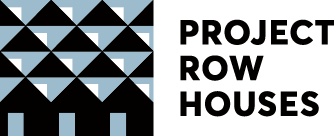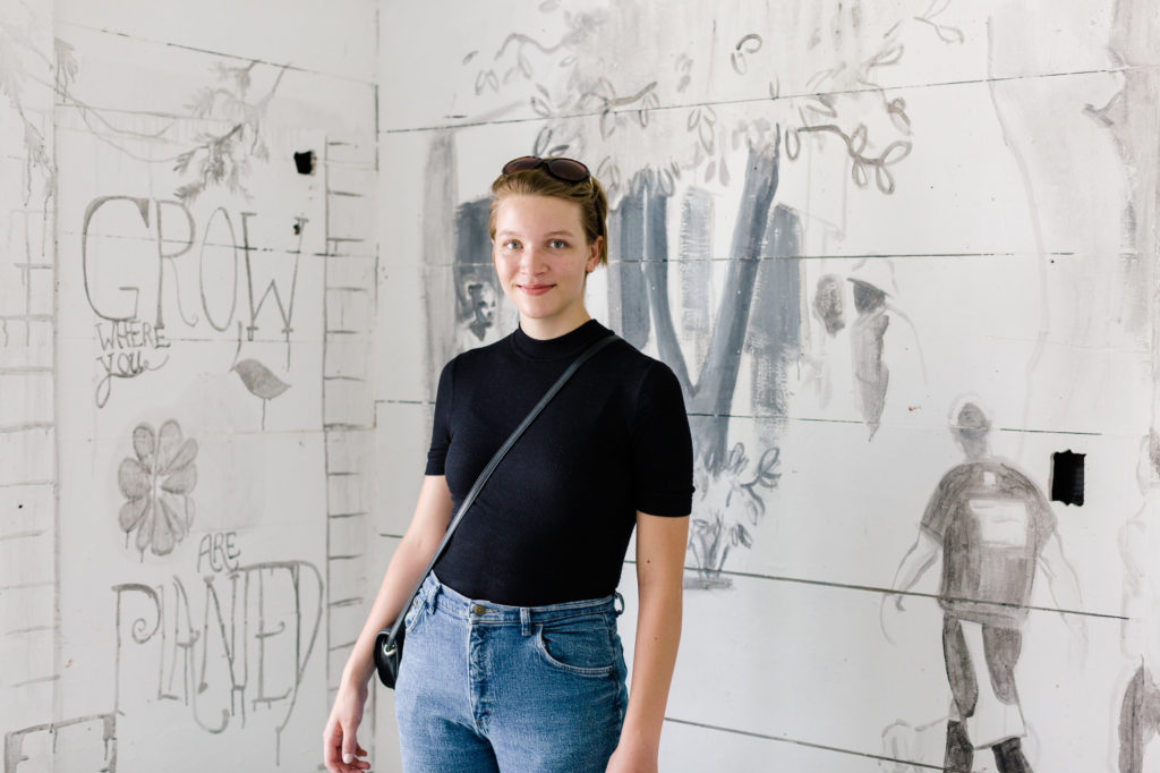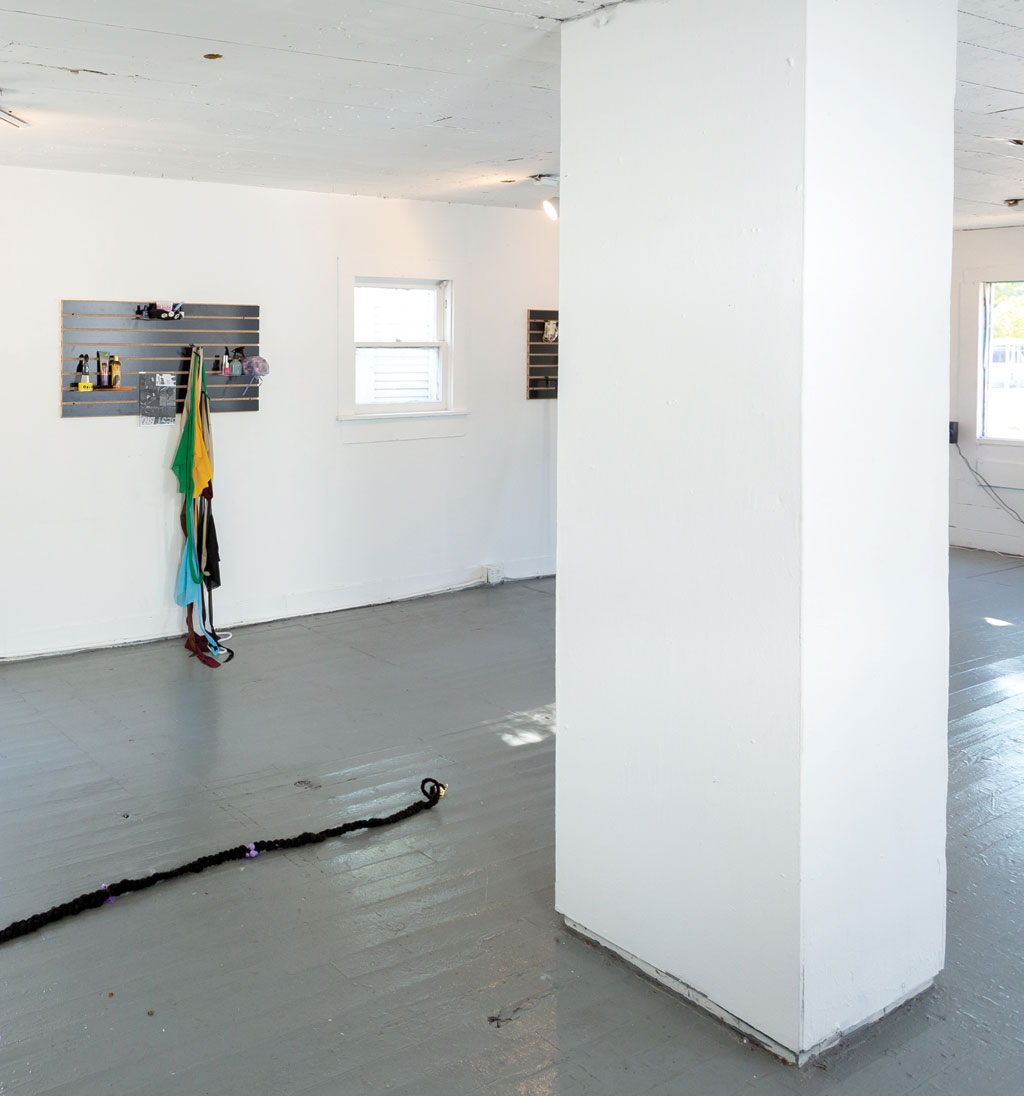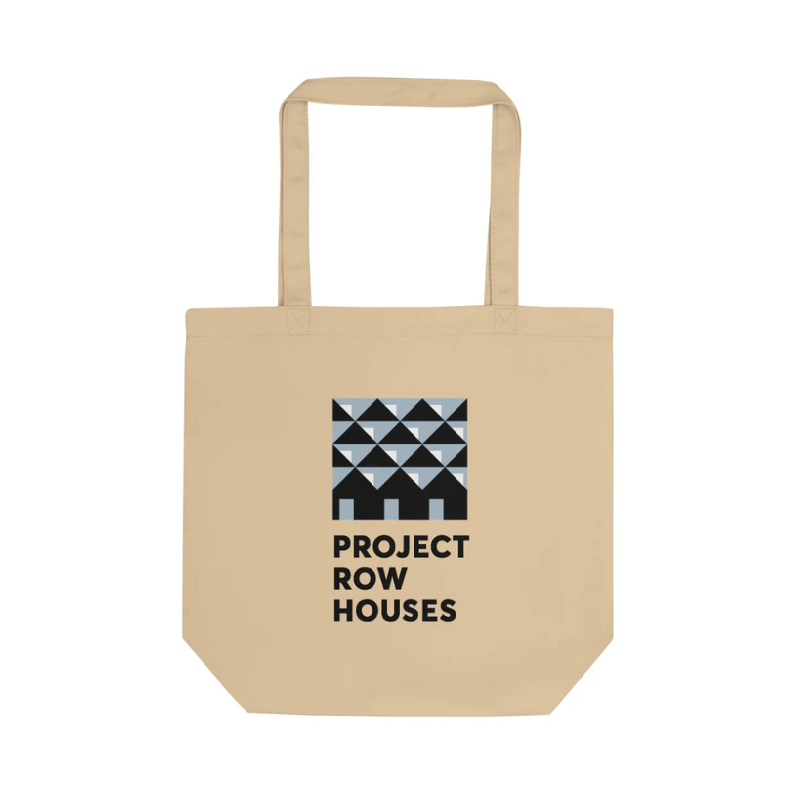Finding Connection, Fighting Erasure
Interview by McKenzie Watson
Photos by Alex Barber
“I’m mostly working at my actual house right now, but I’m in the process of transferring things over,” Lax began. ‘Transferring things over’ meant she was figuring out how to recreate her drawings on the walls of her shotgun house, immersing the viewer in the ghostly evidence of erasure in the Northern Third Ward.
The foundation of her installation is a series of large sheets of paper that she’s been marking with charcoal, and then erasing the marks. Later in her residency, Lax redeveloped this process, applying marks directly to the walls of the house and washing them out to achieve the otherworldly effect she was seeking.
Speaking of charcoal as a resilient yet ephemeral medium, Lax said, “I like it for the way that it shows marks when you try to erase it. I wanted to do something with marks on an area that are disappearing but still leaving traces; I’ve seen some of that in the community, and I wanted to work with that.”
One of the unique aspects of PRH’s Summer Studios residency is the opportunity to make art in a distinctive urban community setting, where the existence of the organization is inextricable from its neighborhood context. The immersion into Third Ward factors significantly into the artistic process for most Summer Studios participants.
Lax’s immersion into Third Ward was an intensification of her own experience of urban relocation. Having moved to Houston from Minnesota about two years ago, Lax said that she’s still processing the differences between her small-town upbringing and life in the fourth-largest American city.
“Moving to Houston, a lot of things stood out to me about urban life,” Lax admitted. “Things that have to do with the imagery or dynamics of urban spaces kept coming up in my work for the past year because these are part of my experience of a new place. I’m trying to sort through, ‘why does this feel really different?’”
Narrowing the scope of the conversation, Lax spoke about some of the remarkable aspects of Third Ward.
“Most of the things I’ve heard coming out of this area is that it’s a really historic area – it holds traces of an ‘old Houston’ that you don’t really see in the rest of the city – but it’s simultaneously disappearing. Even in my time at Project Row Houses, from watching videos and walking around the community and talking to people about it, it’s like this weird interchange between being able to see a lot of permanence in some ways and also impermanence.”
It’s the personal aspect that has captured Lax’s attention the most – and that personal aspect renders issues of erasure all the more poignant for her.
“There’s a lot of buildings and things that are changing, things disappearing that nobody really expected to,” Lax pointed out. “This is a residential area, primarily, and it’s weird when it comes down to places where people used to live – like the parts of the community that were cut out when the highway went through [in reference to the displacement that happened when Highway 288 was built], or plots of land being bought up that people used to live on.”
“This is a neighborhood first and foremost,” Lax emphasized. “It’s weirder for that to change than something like a business district, because in some ways there are more human memories steeped in this.”
The structures and the schedule of the neighborhood have been portals for Lax to glimpse the human side of the Third Ward.
In addition to her paper installations, she worked with projections and video work, ultimately deciding to move away from them. The clips she recorded while biking around the neighborhood capture her own orientation to the neighborhood and still served as reference materials for the final installation.
“I’ll film on the way [home], typically…in the evening,” she said. “It’s an interesting time to be riding around in the area because there’s really so much visual beauty with the contrast of the light, and it’s also when people are getting home from work, so you have people sitting on their porches and stuff like that. It’s easy to find these little images of people really living.”
Speaking directly to the prevalence of porches, Lax said, “I love the porch motif in a lot of the old houses around here. That’s something you don’t get in a lot of new developments, but it’s a great feature. I had a friend who used to live close to TSU, and that was part of his daily ritual: just coming out on the porch, sitting there, smoking, talking to friends who’d pass by. I really like that about the structure of the area here.”
Lax said the architecture is something for which she’s developed a particular fondness. In ways reminiscent of John Biggers’ affection for shotgun houses, Lax recognizes that architecture is the framework for the strong sense of residential community.
“It reminds me a lot of the places where my parents grew up that I’ve spent time in: these older neighborhoods where everybody knows each other. There are all these human ties in the area.” These human ties help Lax connect to the neighborhood and establish a sense of universality.
“This is not an area I’m from,” she acknowledged, “but this is something that connects to the area I’m from. Nothing exists in a vacuum.”
–
Maureen Lax is a sculptor and University of Houston senior who combines video, sound, and sculptural elements to create immersive installations. Through her work she approaches topics like familiarity and alienation, passage, and the psychological effects of spaces.







